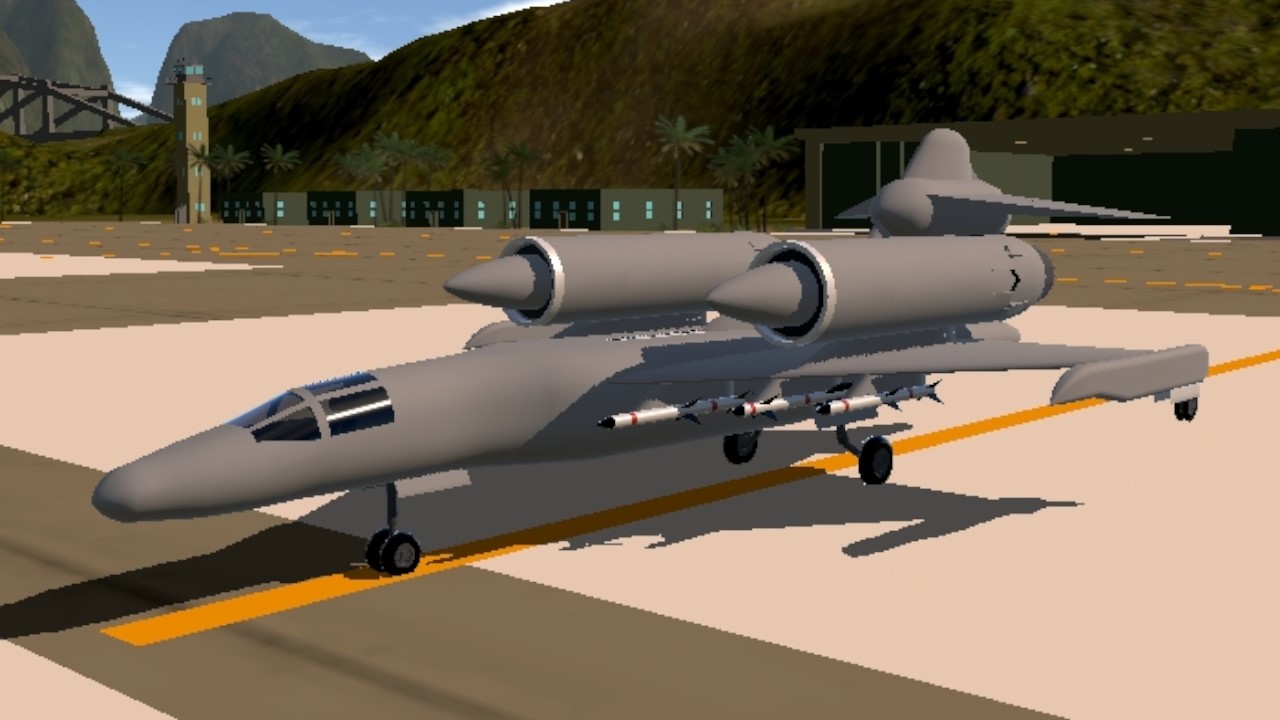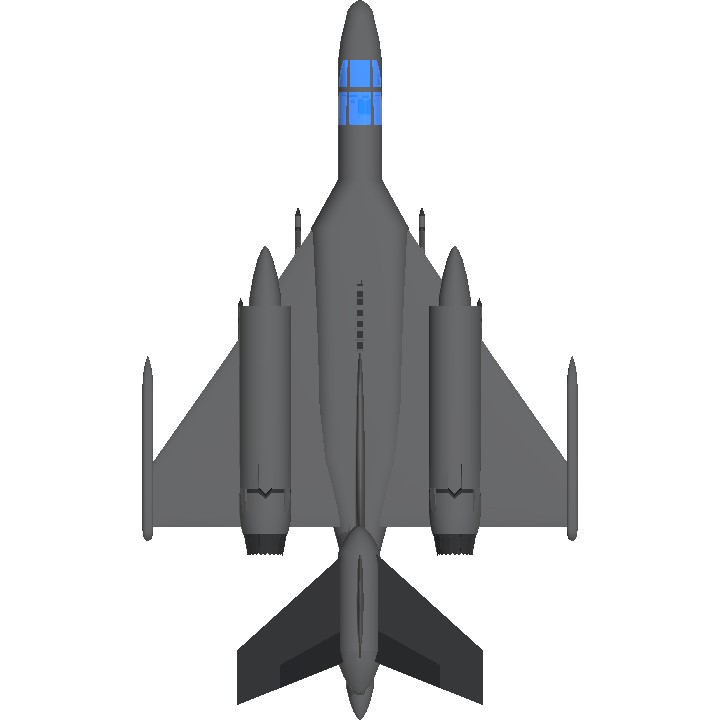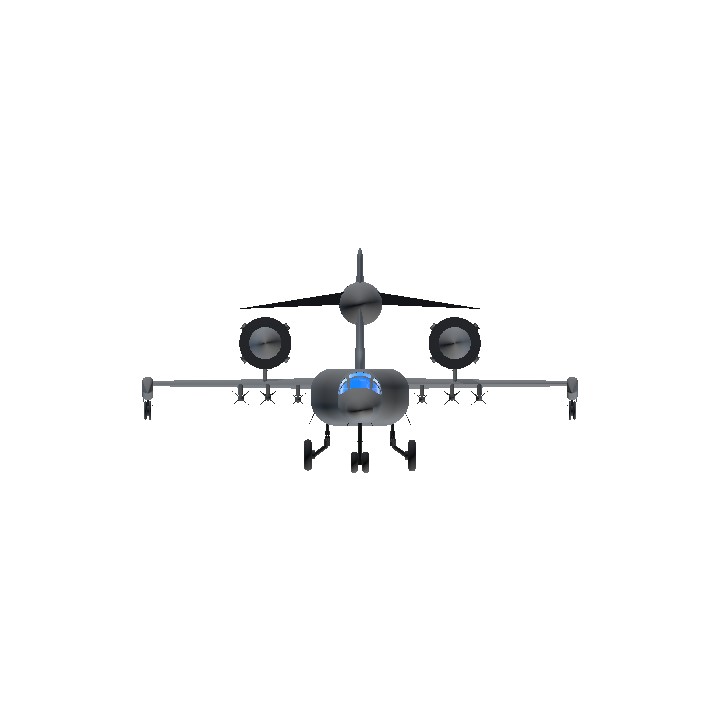Welcome!
Controls of the aircraft
AG-1 ---> Parachute
Loadout
4 Interceptor missiles
2 Guardian missiles
31 Bomb 50 bombs
Notes
It's very front heavy, so I recommend taking off from a long runway (like Wright airport)
It's very difficult to land
It has bad maneuverability
Has no VR support on firing missiles/countermeasures
History
In the early years of the Cold War, as tensions between the East and West escalated, the fictional nation of Novaria sought to bolster its military capabilities. Novaria's aerospace engineers were tasked with developing an advanced interceptor/bomber aircraft that could effectively counter both enemy bombers and provide a nuclear strike capability if needed.
The result was the NX-77 Vengeance, a sleek and formidable aircraft equipped with two powerful jet engines. With its advanced avionics and radar systems, the Vengeance was touted as a cutting-edge marvel and a symbol of Novaria's military might.
However, as the Vengeance was put through its paces during testing and deployment, several flaws became evident. The most significant issue was the aircraft's engine design. The twin-engine configuration, while providing the desired power and speed, proved to be an Achilles' heel for the Vengeance.
One of the primary flaws was the engines' fuel consumption. The Vengeance consumed fuel at an alarming rate, limiting its range and endurance. This flaw meant that the aircraft had to refuel more frequently during long-range missions, making it vulnerable to enemy interception and reducing its overall effectiveness as an interceptor/bomber.
Additionally, the twin-engine design resulted in increased maintenance requirements. The engines had a higher rate of wear and tear, necessitating regular inspections and replacement of critical components. This led to longer maintenance cycles and reduced the number of available aircraft for operational missions, affecting Novaria's combat readiness.
Moreover, the Vengeance suffered from engine synchronization issues. The two engines often struggled to maintain identical thrust levels, leading to control difficulties during critical maneuvers. Pilots reported encountering asymmetric thrust problems, especially during dogfights or evasive maneuvers, which compromised the aircraft's stability and maneuverability.
The flaws in the Vengeance were exacerbated by the rapidly evolving technological landscape. As advancements in radar systems and surface-to-air missile technology occurred, the Vengeance's vulnerabilities became more apparent. It struggled to evade modern anti-aircraft defenses, and its lack of stealth features made it an easy target for enemy radars.
Despite these flaws, Novaria deployed the Vengeance in limited numbers during the height of the Cold War. It served as a deterrent and was involved in a few high-profile missions, but its limitations ultimately prevented it from achieving its full potential. Novaria's aerospace industry learned valuable lessons from the Vengeance project, leading to the development of more advanced and reliable aircraft in the years that followed.
The Vengeance, with its flaws and all, serves as a reminder that even with cutting-edge technology, unforeseen challenges can arise. It symbolizes the complexities and difficulties faced by military engineers during the Cold War era, where innovation and strategic thinking were constantly tested in the pursuit of military superiority.
Military operators
Novarian Air Force (NAF): As the aircraft's country of origin, Novaria's own Air Force became the primary operator of the NX-77 Vengeance. Novarian pilots were trained extensively to fly and operate the aircraft, and they formed the backbone of the Vengeance fleet during the Cold War.
Allied Forces: Novaria, in its efforts to strengthen alliances and foster military cooperation with other nations, shared the technology of the NX-77 Vengeance with select allied countries. These nations, which included fictional counterparts to real-world countries, integrated the Vengeance into their air forces and contributed to joint operations and training exercises.
East Bloc Nations: In an alternate scenario, during a period of political turmoil within Novaria, a faction sympathetic to the Eastern Bloc gained power and aligned the country's foreign policy accordingly. As a result, Novaria's Vengeance fleet was acquired by and integrated into the air forces of Eastern Bloc nations. The aircraft's flaws and limited operational effectiveness were concealed, and it became a symbol of the bloc's military capabilities.
Black Ops Units: Due to its flaws and limited operational use, the NX-77 Vengeance found a niche within covert military operations. Elite special forces units, both within Novaria and in allied countries, utilized the Vengeance for clandestine missions that required its unique capabilities. These black ops units modified the aircraft with additional stealth features and enhanced avionics to improve its survivability and mission success rate.
Training and Evaluation Units: Recognizing the limitations of the NX-77 Vengeance, Novaria established dedicated training and evaluation units within its Air Force. These units were responsible for training new pilots, developing tactics to mitigate the aircraft's flaws, and evaluating its performance in combat scenarios. The knowledge gained from these units contributed to ongoing improvements in the Vengeance's operational effectiveness.
These history text were made by ChatGPT, give him a applause!
(Claps)
Specifications
Spotlights
- RepublicOfCursedPlanes 2.5 years ago
General Characteristics
- Successors 1 airplane(s) +14 bonus
- Created On Android
- Wingspan 32.7ft (10.0m)
- Length 54.0ft (16.5m)
- Height 17.0ft (5.2m)
- Empty Weight 39,411lbs (17,876kg)
- Loaded Weight 78,796lbs (35,741kg)
Performance
- Power/Weight Ratio 0.855
- Wing Loading 30.6lbs/ft2 (149.2kg/m2)
- Wing Area 2,578.4ft2 (239.5m2)
- Drag Points 9441
Parts
- Number of Parts 191
- Control Surfaces 11
- Performance Cost 1,549





let me do it for u
OKAY!
WHICH ONE OF YOU IDIOTS LET THE SR-71 INTO THE TU-22 ENCLOSURE!?!?
@SomeSPGuyWhoLikesLore facts
Peak Soviet engineering
@RepublicOfCursedPlanes eh, I made it like that so that it can fly
so cursed
@mabur